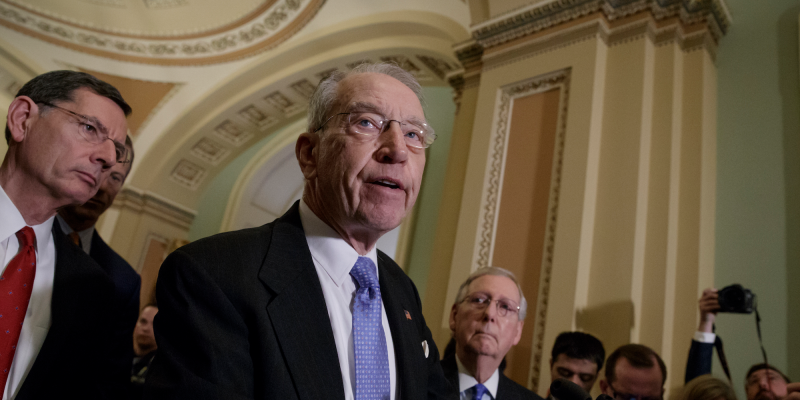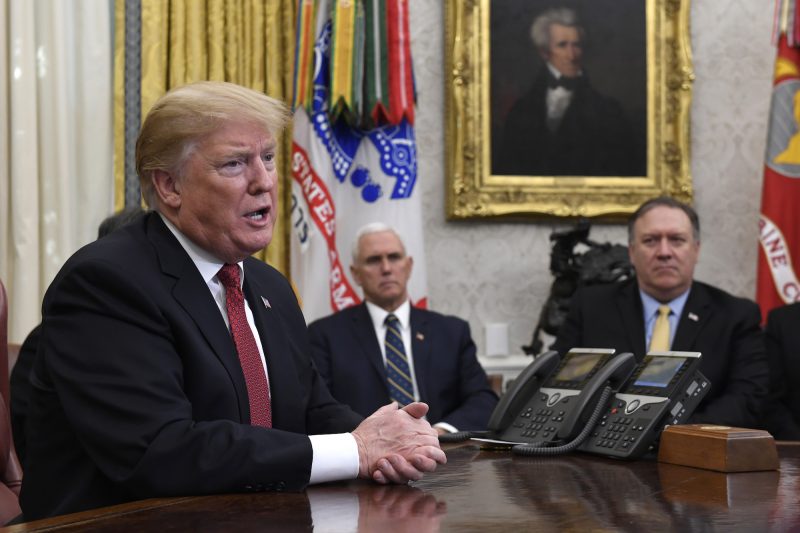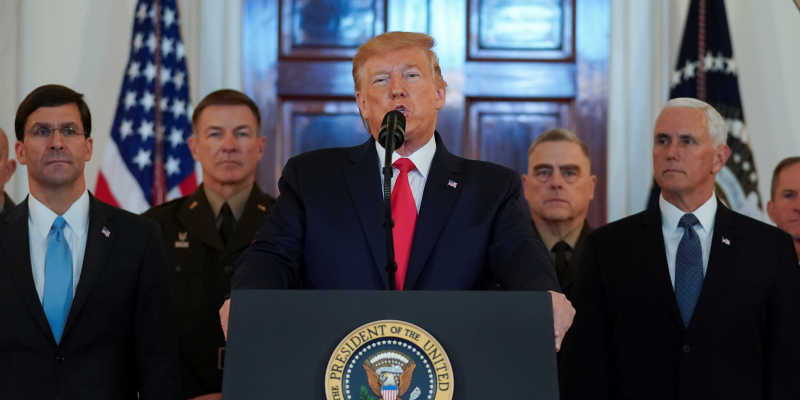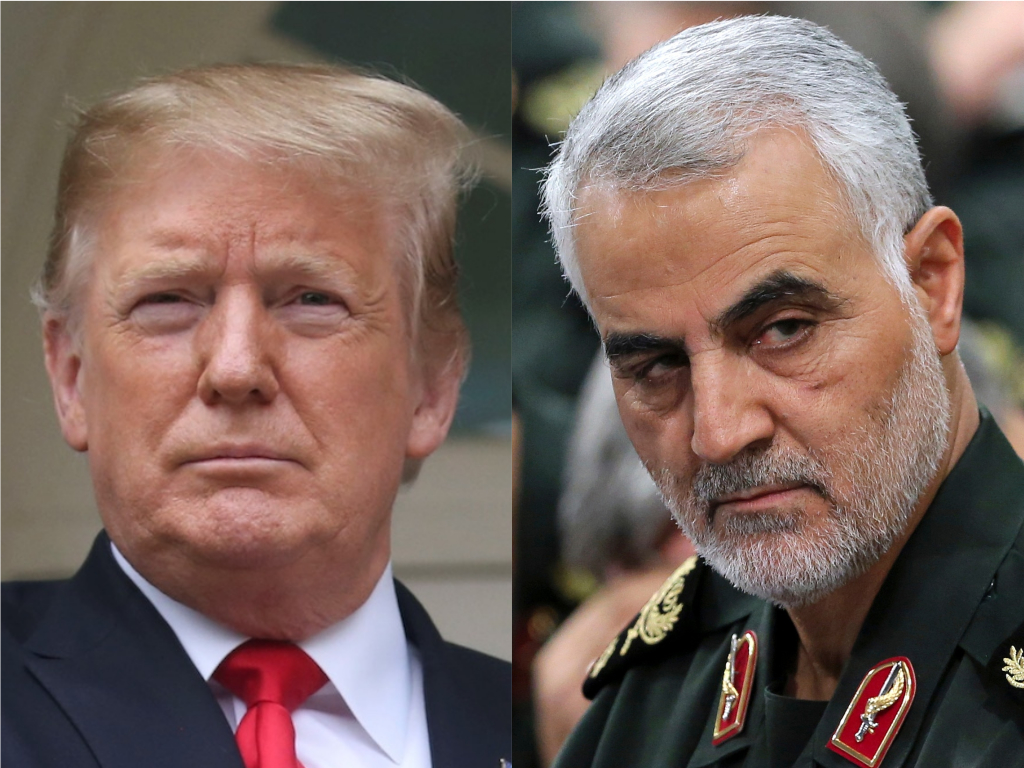- US senators were given a classified briefing by the White House on Wednesday informing them of the decision last week to assassinate the top Iranian military commander Qassem Soleimani.
- Many of the senators criticized the lack of evidence specifying an “imminent threat” that Soleimani posed to US interests around the region.
- This exposes a gaping loophole in the Trump administration’s decision to kill Soleimani, which escalated tensions between the two countries and prompted Iranian missile strikes on two military bases housing US troops.
- Sen. Chris Van Hollen tweeted a partially redacted image of the letter, which you can see below.
- Visit Business Insider’s homepage for more stories.
A photo of an unclassified memo from President Donald Trump to the Senate informing it of his strike on the Iranian military commander Qassem Soleimani does not indicate that the Iranian general posed an imminent threat to US regional interests – exposing a gaping loophole in his justification.
The photo, tweeted by Sen. Chris Van Hollen of Maryland late Wednesday night, showed a Saturday letter from Trump to Sen. Chuck Grassley, the Republican president of the Senate.
Parts of the letter have been redacted for the public.

Here's what it says:
Dear Mr. President:
[redactions]
I have also authorized the Secretary of Defense to deploy additional United States forces to the United States Central Command area of responsibility.
I directed these actions in response to an escalating series of attacks in recent months by Iran and Iran-backed militias on United States forces and interests in the Middle East region. The purposes of these actions are to protect United States personnel, to deter Iran from conducting or supporting further attacks against United States forces and interests, to degrade Iran's and Qods Force-backed militias' ability to conduct attacks, and to end Iran's strategic escalation of attacks on and threats to United States interests.
[redactions]
[signed] Donald Trump.
Here’s the unclassified version of what Trump sent Congress after the hit on Suleimani.
From all we’ve seen, including the redacted parts here and the briefing, the facts do not show an imminent threat.
We must pass a bill making clear Trump can’t start a war without a vote. pic.twitter.com/mUnkLwsph1
— Senator Chris Van Hollen (@ChrisVanHollen) January 9, 2020
Qods is an alternative spelling for Quds Force, the elite military unit led by Soleimani at the time of his death. Soleimani was killed by a US drone strike near Baghdad International Airport in the early hours of Friday.
The justifications for killing Soleimani, as stated in the letter, appear at odds with the Trump administration's repeated claims by the Pentagon and State Department that it directed the strike because of "imminent threats to American lives."
Defense Secretary Mark Esper also said on Tuesday that the US decision was made to preempt an Iranian attack on US targets within days, and Trump's national security adviser, Robert O'Brien, said Soleimani was plotting "to attack American facilities and diplomats."
Trump's memo to the Senate, however, cited "an escalating series of attacks in recent months" by Iran and its regional armed allies but did not explicitly mention an imminent threat.
Multiple Democratic and a few Republican lawmakers publicly criticized the letter, with many highlighting the lack of evidence of a specific, imminent threat to the region.
Van Hollen, who tweeted the Trump's letter to Grassley, added: "From all we've seen, including the redacted parts here and the briefing, the facts do not show an imminent threat. We must pass a bill making clear Trump can't start a war without a vote."
As highlighted by Insider's Sonam Sheth, even if there was an imminent threat to US regional interests, killing Soleimani did not necessarily remove that threat because he would not have carried out such an attack himself.

The strike on Soleimani came after days of open hostilities between US forces and Iraqi militias backed by Iran.
The US blamed the Kataeb Hezbollah group for a December 27 rocket attack on an Iraqi base that killed an American contractor. In response, the US launched an airstrike thought to have killed dozens of Kataeb Hezbollah fighters, and Iraqi protesters then stormed the gates of the US Embassy in Baghdad.
Many top congressional leaders said in the hours after the Soleimani strike that they were not informed of the decision ahead of time and urged the White House to seek congressional approval before starting a war with Iran.
House Speaker Nancy Pelosi called for a full briefing for Congress shortly after news of the strike broke, suggesting she had not been informed of the decision.
Sens. Chuck Schumer and Mark Warner - two Democratic members of the "Gang of Eight," whom presidents traditionally keep updated about national security - also told HuffPost they were not warned of the strike.

In the days following Soleimani's death Iranian leaders vowed to exact revenge on the US, and Iran took at least the first step early Wednesday by launching more than a dozen missiles on two Iraqi bases that housed US troops.
Iranian leaders said the attack had "concluded" their "proportionate" retaliation against the US, which Trump appeared to believe.
Many intelligence and diplomatic experts, however, believe Iran could later unleash more deniable - but possibly deadlier - attacks on the US by way of proxy groups in the region and cyberattacks on American banks and power networks.
Read all of Business Insider's coverage of the aftermath of the Soleimani strike here.
- Read more:
- Lawmakers tear into Trump over a military briefing they say provided no evidence of an 'imminent threat' from Iran
- Iran's retaliation for Qassem Soleimani's death may not be finished. The real revenge could take years to materialize.
- The Iranian missile strike on 2 US bases may be the end of open hostilities between Tehran and Washington - but only if Trump is smart enough to get the message
- Not even Trump is distracted from impeachment by his assassination of Soleimani
- Trump was given a 'menu' of options for the Iran strike that included ships, missile facilities, and militia groups

